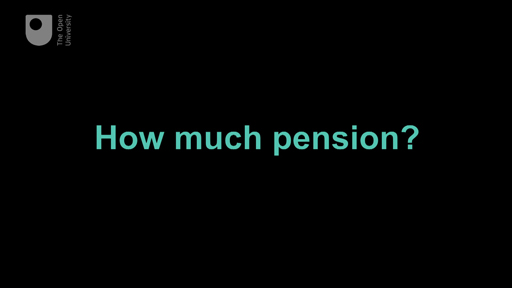7.1.6 Calculating pension income
Learn in this video how to work out amounts of pension at retirement under defined benefit schemes.
Download this video clip.Video player: ou_futurelearn_money_vid_1063.mp4


Transcript
Martin Upton
Let's practice working out how much pension people can receive from their final salary scheme. Here are three examples.
John retired after 20 years in a 1/80th scheme, his pay at retirement was 34,000 pounds a year. What's his annual pension? Do a quick calculation.
Let's check the answer. John's pension was 1/80th x 20 years x 34,000 pounds = 8,500 pounds a year.
If Paula stays in her 1/60th scheme until retirement, she will have been a member for 15 years. Assume her pay then will be the same as today: 51,000 pounds per year. What's her annual pension?
Here's the result: Paula can expect a pension of 1/60th x 15 x 51,000 pounds = 12,750 pounds a year.
Lewis is 27 now and has just joined his scheme. He expects to be a member of his 1/80th scheme until the age of 65. Assume his pay then will be the same as today: that is, 25,000 pounds per year. What's his pension?
The answer is: Lewis can expect to have 65 - 27 = 38 years in the scheme. His pension would be 1/80th x 38 x 25,000 pounds = 11,875 pounds a year.
Why do you think using pay today in the pension formula might give a reasonable guide to pension at retirement? Well, working out pensions from a final salary scheme using pay levels today means we assume that the expected pension is approximately adjusted for inflation between today and when the pension is drawn.
This is a reasonable assumption for a person who stays in their scheme until retirement because over the long term we expect earnings to rise by at least the same rate as prices. If the person leaves the scheme before retirement, the pension they have built up will typically be revalued with 1price inflation up to a limit, so using today's pay is still a useful guide. Good to know, isn't it!
Interactive feature not available in single page view (see it in standard view).
